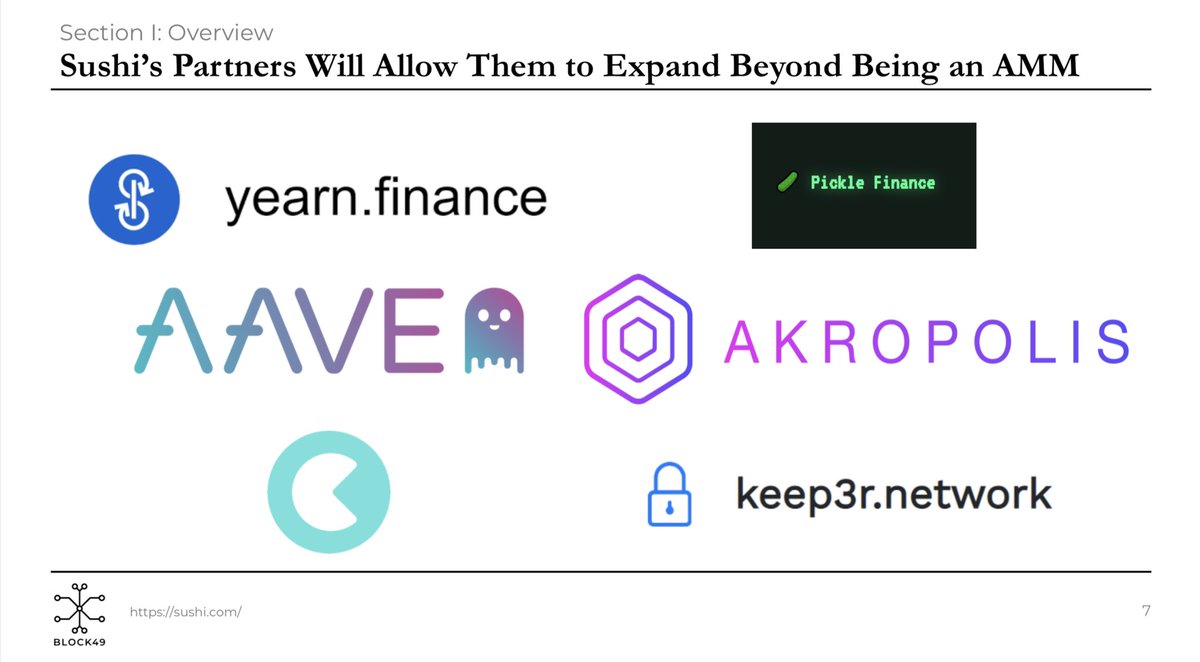
DeFi Blue Chip valuation [Thread]
As requested by @Arthur_0x
1. Market Cap/TVL
Measures the value of each $ locked in the protocol. Protocols that trade at higher multiples are not necessarily overvalued, as they often generate more revenue per $ of TVL
$UNI $AAVE $MKR $COMP
As requested by @Arthur_0x
1. Market Cap/TVL
Measures the value of each $ locked in the protocol. Protocols that trade at higher multiples are not necessarily overvalued, as they often generate more revenue per $ of TVL
$UNI $AAVE $MKR $COMP

2. FDV/TVL
Similar to the previous metric except now we are looking at the fully diluted value (if all coins were in circulation).
$UNI $AAVE $MKR $COMP $SNX $SUSHI $YFI $CRV
Similar to the previous metric except now we are looking at the fully diluted value (if all coins were in circulation).
$UNI $AAVE $MKR $COMP $SNX $SUSHI $YFI $CRV

3. Annual Revenue / TVL
This shows how much each $ locked generates in revenue. This metric helps explain the MKT/TVL ratio as it is clear the market assigns a premium for protocols that are more capital efficient.
$UNI $AAVE $MKR $COMP $SNX $SUSHI $YFI $CRV
This shows how much each $ locked generates in revenue. This metric helps explain the MKT/TVL ratio as it is clear the market assigns a premium for protocols that are more capital efficient.
$UNI $AAVE $MKR $COMP $SNX $SUSHI $YFI $CRV

4. Market Cap / Annualized Revenue
This metric compares how much each protocol is worth relative to its earnings. A high MKT/REV could either indicate an overvalued protocol or could indicate a high growth multiple priced in by the market.
$UNI $MKR $AAVE $COMP $SNX $SUSHI
This metric compares how much each protocol is worth relative to its earnings. A high MKT/REV could either indicate an overvalued protocol or could indicate a high growth multiple priced in by the market.
$UNI $MKR $AAVE $COMP $SNX $SUSHI

5. Market Cap / # of Users
This effectively shows how much each user of the protocol is worth. A high MKT/User ratio can either indicate an overvalued protocol or that each individual user provides a lot of value. Again these metrics often require more than one to compare.
This effectively shows how much each user of the protocol is worth. A high MKT/User ratio can either indicate an overvalued protocol or that each individual user provides a lot of value. Again these metrics often require more than one to compare.

6. Revenue / # of Users
This paints a bit clearer picture than metric 5. We can see that $AAVE's high MKT/User is likely due to its high revenue per user whereas $SNX might be overvalued given that it's Rev/User does not match up with its MKT/User.
$COMP $SUSHI $YFI $MKR $UNI
This paints a bit clearer picture than metric 5. We can see that $AAVE's high MKT/User is likely due to its high revenue per user whereas $SNX might be overvalued given that it's Rev/User does not match up with its MKT/User.
$COMP $SUSHI $YFI $MKR $UNI

7. Closing thoughts
A reminder that any sole metric does give an accurate representation of whether a protocol is under or overvalued. However, by looking across a number of metrics and making comparisons we can get a better idea of a protocol's true valuation.
#DeFi $ETH
A reminder that any sole metric does give an accurate representation of whether a protocol is under or overvalued. However, by looking across a number of metrics and making comparisons we can get a better idea of a protocol's true valuation.
#DeFi $ETH
For those looking to learn a bit more about these blue-chip DeFi protocols, here is our summary of @SushiSwap, one of the most undervalued protocols according to these metrics.
https://twitter.com/Block49Capital/status/1389131200799907841?s=20
• • •
Missing some Tweet in this thread? You can try to
force a refresh









